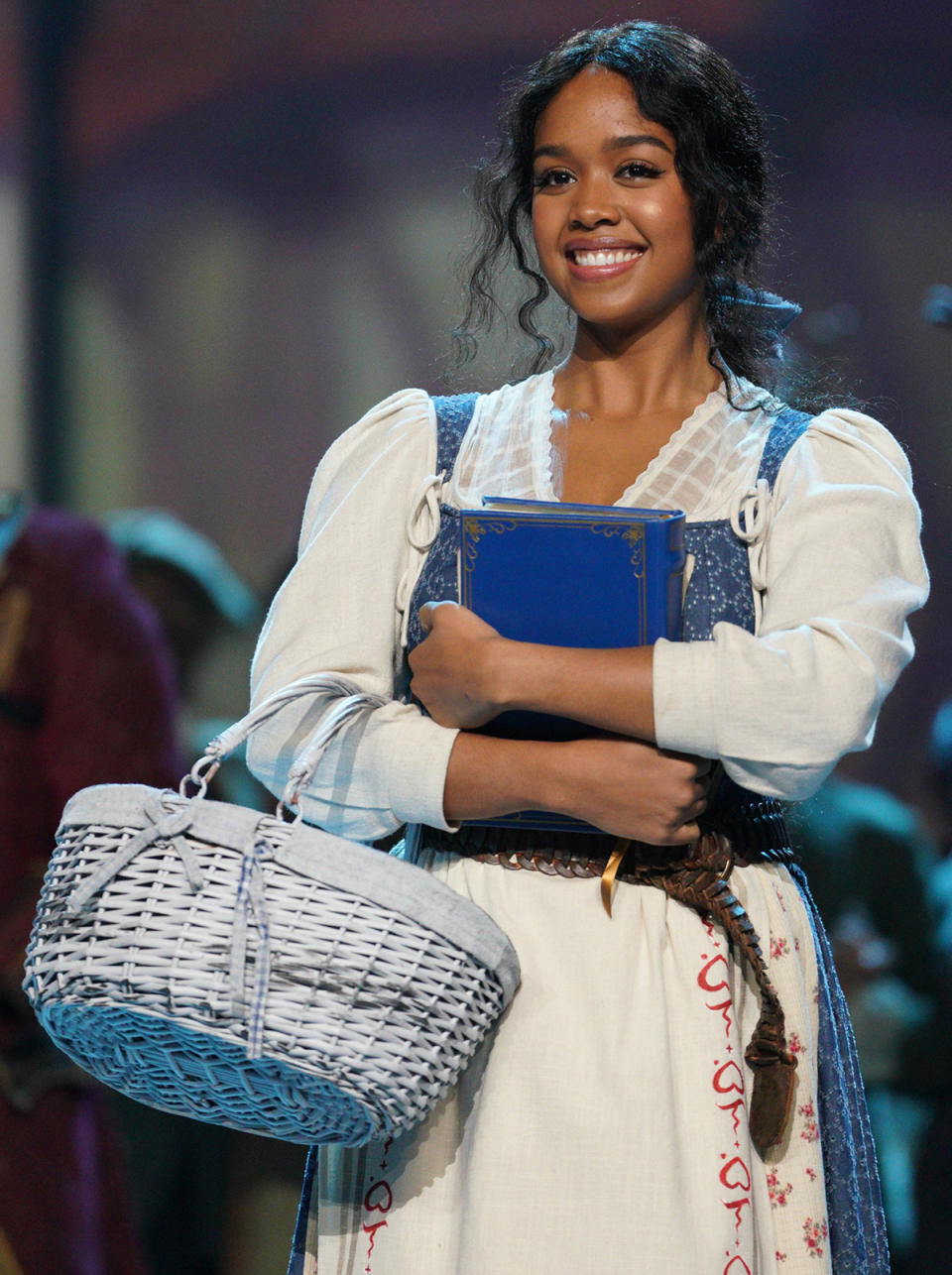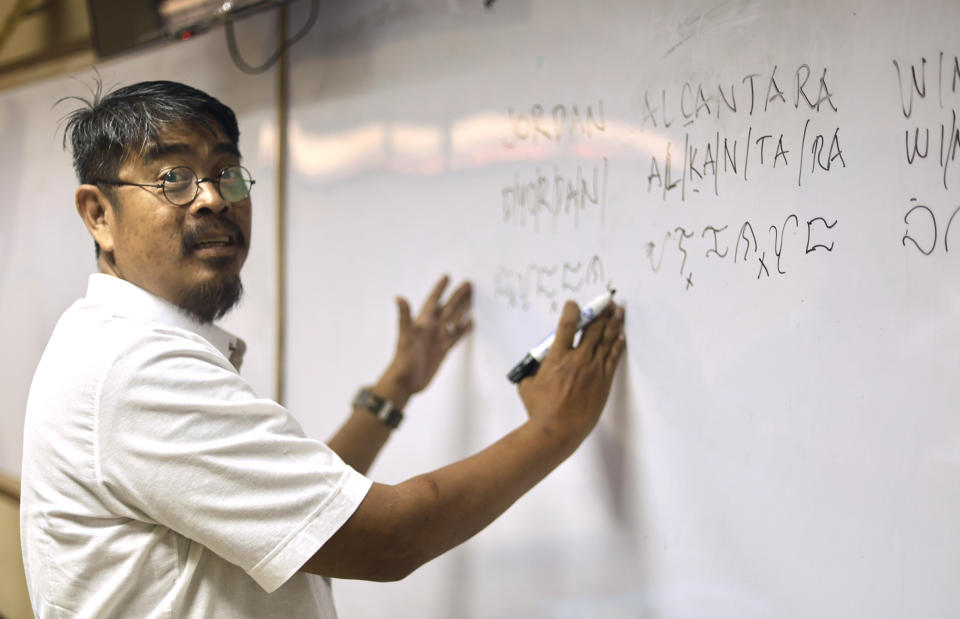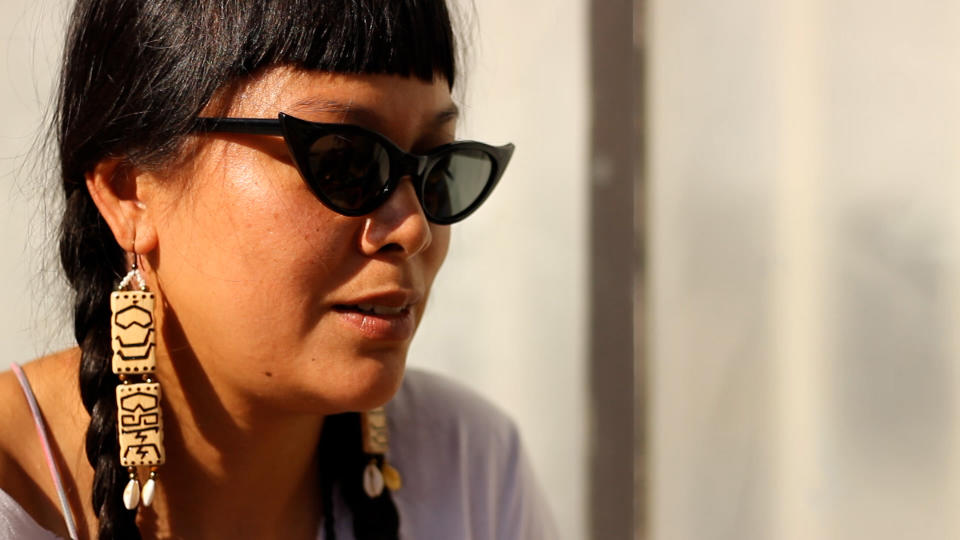An ancient writing system from the Philippines makes an unlikely comeback
One glance at Filipino social media and you will find a recurrent set of waves, twists and inverted heart shapes. They’re more than just symbols — they’re part of the 17-character writing system called Baybayin, which is making a comeback after hundreds of years.
The ancient script can now be found on streetwear and trendy booze, in card games and tattoos and even on Filipina American singer H.E.R.’s attire.

When the Spanish colonized the Southeast Asian archipelago, they instructed Filipinos to use the Latin alphabet, and Baybayin, the written component of Tagalog, the national language of the Philippines, fell out of use. But over the past two decades, young people, artists and many among the Filipino diaspora are looking to re-establish a sense of cultural pride, and they have started a movement to bring it back to life.
For Jay Enage, 50, one of the few Baybayin instructors in the country, the language is a crucial puzzle piece to Filipino identity.
“The writing is visual. So that’s why it’s powerful. Because when you write something, what you say becomes record, it becomes document, and it becomes permanent,” he said.
Enage, who has been teaching and advocating the language for 13 years, said he sees a real enthusiasm for it among the youth. High school student Nyrene Paranga is one of many youths seeking out ways to learn Baybayin and make it more accessible to her peers. She said it means a lot to her to help organize a Baybayin workshop at her school.
“We hope that Baybayin will be part of the curriculum for high school and maybe elementary, because it can be incorporated with our mother tongue,” she said. “I mean, you get English subjects instead of Baybayin classes, and recently our school actually adapted Korean language instead of Baybayin.”

But it is an uphill battle to find resources, Paranga said, as a national bill that would make Baybayin a requirement in schools’ curricula remains stalled in the Senate. Ethnic groups that speak their own languages oppose having aspects of Tagalog reinforced in the classroom, instead of their language. Enage is a major advocate of the bill.
Outside of textbooks, the language has made some inroads. Android and Apple users can download a Baybayin keyboard on the app stores, and active Facebook groups walk members through translations. But it is the creative types who have found a visual playground in the script’s flowing curves, flexible loops and lightning bolt-like zigzags and propelled it into a hip part of pop culture.

That, however, has opened up the question of whether Baybayin is destined to become a purely decorative script or a daily mode of communication. For artist and calligrapher Taipan Lucero, the two are not mutually exclusive — by increasing exposure, the artistic component complements efforts to promote fluency in the forgotten language.
“One of my goals is to get interest through my art. When people see [Baybayin], they don’t know what it is. Aesthetically, they might be just attracted to how it looks. And then once they’re there, and then they sort of are curious about it,” Lucero said.
A major presence among such cultural torchbearers are Filipinos abroad.
“Just here in San Francisco, you see the script more within this 6th and Mission area, almost more than what you see in the Philippines. And that’s because the community has realized that there is a need for identity,” said Kristian Kabuay, a Filipino American artist.
Kabuay said the script is more than a fad. He believes that Baybayin is so popular in the diaspora that a new chapter in its evolution has already begun and that, with it, so has a conversation about how the language can adapt to the 21st century.
“After you identify as Filipino, Filipinx or whatever that is, you know, then what is that value, and that is the challenging part. So how do we give these cultural assets value? And with value comes protection,” he said.
This article was originally published on NBCNews.com

